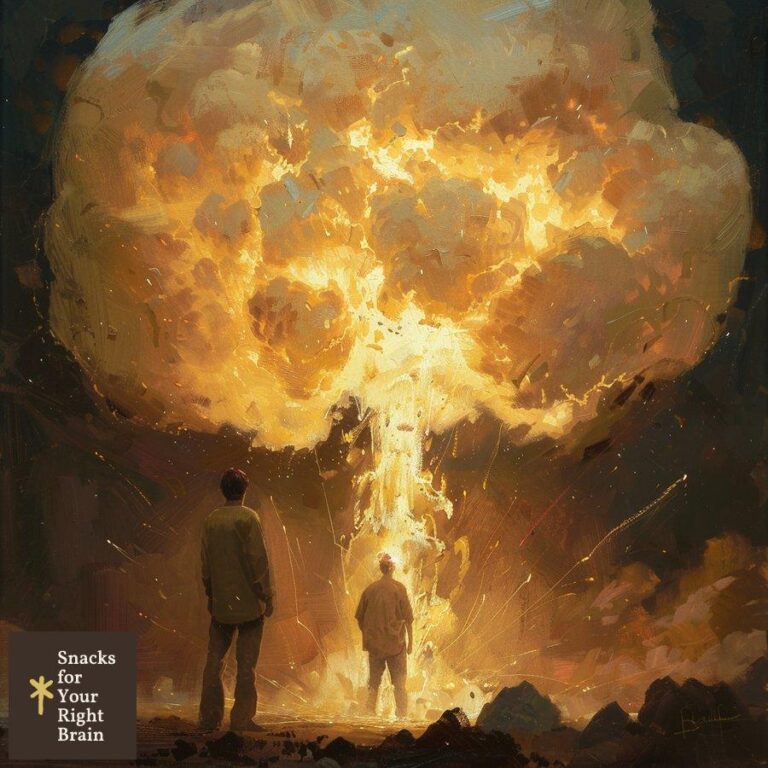What Are the Five Elements of Plot in Short Stories
What are the five elements of plot in short stories?
What is plot in short stories?

In the realm of short fiction, plot serves as the backbone of the narrative, providing structure and direction to the story. It is the sequence of events that unfolds, guiding readers through the characters’ journey and experiences. Unlike novels, which have the luxury of expansive storytelling, short stories demand a concise and impactful plot that can captivate readers within a limited word count.
Plot in short stories is characterized by its brevity and intensity. It typically focuses on a single conflict or problem that the protagonist must confront and resolve. This concentrated approach allows writers to delve deep into a specific moment or situation, exploring its nuances and implications within a compact framework.
The plot of a short story often follows a linear progression, though some writers experiment with non-linear structures to create unique narrative experiences. Regardless of the chosen structure, the plot must maintain a sense of cohesion and purpose, driving the story forward and keeping readers engaged from beginning to end.
Elements of Plot in Short Stories
Exposition: This introduces the characters, setting, and initial situation.
Rising Action: Events that build tension and lead to the climax.
Climax: The turning point or moment of highest tension in the story.
Falling Action: The aftermath of the climax, showing its immediate effects.
Resolution: The conclusion that ties up loose ends and provides closure.
These elements work in concert to create a compelling narrative arc, even within the constraints of short fiction. Writers must carefully balance these components, ensuring that each serves its purpose without overwhelming the story’s limited scope.
The Importance of Concision in Short Story Plots
Short story plots demand precision and economy of words. Every sentence, every scene must contribute to the overall narrative. This requirement for concision challenges writers to:
Choose significant details: Only include information that directly impacts the story’s progression or character development.
Create multi-layered scenes: Craft scenes that simultaneously advance the plot, reveal character, and build atmosphere.
Employ subtext: Use implication and suggestion to convey deeper meanings without explicitly stating them.
Focus on a singular effect: As Edgar Allan Poe famously advocated, short stories should aim for a unified emotional impact or thematic resonance.
By adhering to these principles, writers can craft plots that are both engaging and appropriate for the short story format. The plot becomes a finely tuned instrument, each element carefully calibrated to produce a harmonious and impactful narrative experience.
Plot vs. Story in Short Fiction
It’s crucial to distinguish between plot and story in the context of short fiction:
Story: The chronological sequence of events as they actually occurred.
Plot: The way these events are presented to the reader, which may involve rearrangement, omission, or emphasis for dramatic effect.
In short stories, this distinction becomes even more pronounced due to the limited space available. Writers must make strategic decisions about which events to include in the plot and how to present them to maximize their impact on the reader.
For example, a short story about a family reunion might have a chronological story spanning several days. However, the plot might focus solely on a pivotal conversation during dinner, with past events revealed through dialogue or brief flashbacks. This selective presentation allows the writer to concentrate on the most significant moments while still conveying the broader context of the family’s history and relationships.
Understanding the difference between story and plot empowers writers to craft more effective short fiction. By manipulating the presentation of events, they can create tension, surprise, and emotional resonance within the confines of the short story format.
Why are the five elements of plot crucial for short fiction?

The five elements of plot – exposition, rising action, climax, falling action, and resolution – are indispensable tools for crafting compelling short fiction. These components provide a framework that allows writers to create cohesive, engaging narratives within the limited confines of the short story format. Understanding and effectively utilizing these elements can significantly enhance the quality and impact of short fiction.
Structural Integrity
The five plot elements offer a solid structure for short stories, ensuring that the narrative flows logically and maintains reader interest. This structure is particularly important in short fiction, where every word counts and there’s little room for digression or unnecessary details.
Exposition sets the stage, providing essential context.
Rising action builds tension and drives the story forward.
The climax delivers the story’s peak moment of conflict or revelation.
Falling action shows the immediate consequences of the climax.
Resolution provides closure and satisfaction for the reader.
By adhering to this structure, writers can create stories that feel complete and satisfying, even within a limited word count.
Emotional Engagement
Each element of the plot serves a specific purpose in engaging the reader emotionally:
Exposition creates a connection between the reader and the characters or situation.
Rising action builds anticipation and investment in the outcome.
The climax delivers an emotional payoff, whether it’s excitement, shock, or catharsis.
Falling action allows readers to process the climax’s impact.
Resolution provides emotional closure and often leaves readers with lingering thoughts or feelings.
This emotional journey, compressed into the short story format, can create a powerful and memorable reading experience.
Efficiency in Storytelling
Short fiction demands efficiency, and the five plot elements provide a roadmap for streamlined storytelling:
Exposition: Writers can quickly establish the necessary background without lengthy descriptions.
Rising Action: Each event or complication can be carefully chosen to advance the plot significantly.
Climax: The story’s central conflict or question can be addressed directly and impactfully.
Falling Action: The aftermath of the climax can be explored concisely, focusing on key reactions or consequences.
Resolution: The story can be concluded efficiently, avoiding unnecessary epilogues or explanations.
This efficiency allows writers to create rich, complex narratives within the constraints of the short story format.
Flexibility and Variation
While the five elements provide a useful framework, they also offer flexibility for creative storytelling:
Varied Proportions: Writers can adjust the relative length and emphasis of each element to suit their narrative goals.
| Plot Element | Traditional Proportion | Experimental Proportion |
|---|---|---|
| Exposition | 10-15% | 5-30% |
| Rising Action | 40-50% | 20-70% |
| Climax | 10-15% | 5-40% |
| Falling Action | 20-25% | 5-30% |
| Resolution | 5-10% | 0-20% |
Non-linear Structures: The elements can be rearranged or interwoven for unique narrative effects.
Implied Elements: Some elements, particularly exposition or resolution, can be implied rather than explicitly stated, allowing for open-ended or ambiguous stories.
This flexibility enables writers to experiment with form and structure while still maintaining a coherent narrative.
Reader Expectations and Satisfaction
The five plot elements align with readers’ innate understanding of story structure, even if they’re not consciously aware of these components. This alignment helps to:
Create a sense of familiarity and comfort for readers.
Set up and fulfill narrative expectations.
Provide a satisfying reading experience, even in brief narratives.
By skillfully manipulating these elements, writers can surprise readers while still delivering a story that feels complete and rewarding.
Teaching and Analysis
For both aspiring writers and literary scholars, the five elements of plot provide a valuable framework for:
Analyzing existing short stories to understand their structure and effectiveness.
Identifying areas for improvement in one’s own writing.
Teaching the fundamentals of narrative construction in a clear, systematic way.
This analytical approach can lead to a deeper understanding and appreciation of the craft of short story writing.
In conclusion, the five elements of plot are crucial for short fiction because they provide structure, emotional engagement, efficiency, flexibility, reader satisfaction, and a framework for analysis and improvement. By mastering these elements, writers can create short stories that resonate deeply with readers, leaving a lasting impact despite their brevity.
How does exposition set the stage in short stories?
Exposition plays a vital role in short stories, serving as the foundation upon which the entire narrative is built. It introduces readers to the essential elements of the story – the characters, setting, and initial situation – providing the context necessary for understanding and engaging with the unfolding events. In the confined space of a short story, effective exposition becomes even more crucial, as it must accomplish its goals swiftly and efficiently.
Introducing Characters

In short stories, character introduction through exposition must be concise yet impactful. Writers often employ the following techniques:
Vivid Descriptions: Using carefully chosen details to create a strong initial impression of characters.
Example: “Sarah’s calloused hands and sun-weathered face spoke of a lifetime spent tending the family farm.”
Actions and Reactions: Revealing character traits through their behaviors and responses to situations.
Example: “When the stray cat limped into view, Tom immediately set aside his work and rushed to find a first-aid kit.”
Dialogue: Utilizing speech patterns and content to convey personality and background.
Example: “‘Ain’t got time for your fancy book learnin’,’ Gramps grumbled, his words thick with the local dialect.”
Establishing Setting
The setting in a short story often plays a significant role in the plot or theme. Exposition must efficiently convey the time, place, and atmosphere:
Sensory Details: Engaging multiple senses to create a vivid mental image.
Example: “The acrid smell of factory smoke mingled with the distant sound of ship horns, painting a picture of the bustling 19th-century port town.”
Cultural or Historical Markers: Using specific references to establish the era or social context.
Example: “Mary adjusted her flapper dress and applied another layer of rouge, ready for a night of speakeasies and jazz.”
Mood and Atmosphere: Setting the emotional tone through descriptive language.
Example: “The abandoned house loomed before them, its broken windows like hollow eyes staring into the gathering dusk.”
Presenting the Initial Situation
Exposition in short stories often introduces the central conflict or problem that will drive the narrative:
Inciting Incident: Presenting the event or circumstance that disrupts the status quo.
Example: “The letter lay unopened on the kitchen table, its official seal promising news that would change everything.”
Character Goals or Desires: Establishing what the protagonist wants or needs.
Example: “Every night, Maria stared at the stars, dreaming of the day she’d leave this small town behind.”
Underlying Tensions: Hinting at existing conflicts or issues that will come into play.
Example: “At family dinners, the empty chair at the head of the table stood as a silent reminder of unresolved grievances.”
Techniques for Efficient Exposition
Given the limited word count of short stories, writers must employ techniques to convey exposition quickly and effectively:
In Media Res: Starting the story in the middle of action and weaving in background information as needed.
Dialogue: Revealing information through natural conversations between characters.
Flashbacks: Briefly revisiting past events to provide context.
Symbolism: Using objects or settings to represent larger themes or backstories.
Balancing Information and Intrigue
One of the challenges of exposition in short stories is providing enough information to orient the reader while maintaining an air of mystery or intrigue. Writers must strike a delicate balance:
Provide Essential Information: Give readers the basic facts they need to understand the story.
Create Questions: Leave some aspects unexplained to pique curiosity and encourage continued reading.
Avoid Info-Dumping: Resist the urge to overload readers with background information all at once.
Integrating Exposition Throughout the Story
While exposition is often associated with the beginning of a story, in short fiction, it can be effectively dispersed throughout the narrative:
Opening Paragraph: Establish the most critical elements immediately.
Gradual Revelation: Unveil additional details as they become relevant to the plot.
Climactic Revelations: Save some expository information for dramatic reveals later in the story.
This approach allows writers to maintain pacing and suspense while still providing necessary background information.
Exposition and Theme
In short stories, exposition can also serve to introduce or reinforce the central theme:
Symbolic Settings: Choosing locations that reflect the story’s underlying message.
Example: A story about isolation set in a remote lighthouse.
Character Backgrounds: Crafting character histories that resonate with the theme.
Example: In a story about redemption, introducing a protagonist with a troubled past.
Initial Conflicts: Presenting problems that embody the thematic concerns.
Example: A story about social inequality opening with a confrontation between different social classes.
By aligning exposition with theme, writers can create a more cohesive and impactful short story.
In conclusion, exposition in short stories serves as a critical foundation, efficiently introducing characters, settings, and situations while setting the stage for the narrative to unfold. Through careful crafting and strategic placement of expository elements, writers can create engaging openings that draw readers into the world of the story, providing just enough information to orient them while maintaining the intrigue and concision necessary for effective short fiction.
What role does rising action play in building tension?

Rising action is a fundamental component of plot structure in short stories, playing a crucial role in building tension and engaging readers. This element bridges the gap between the initial exposition and the climax, gradually increasing the stakes and complexity of the narrative. In the confined space of a short story, rising action must be particularly focused and efficient, driving the plot forward while maintaining a sense of momentum and anticipation.
Escalating Conflict
The primary function of rising action is to escalate the central conflict of the story:
Introducing Obstacles: Presenting challenges that the protagonist must overcome.
Example: In a story about a mountain climber, each stage of the ascent brings new difficulties – treacherous weather, equipment failure, physical exhaustion.
Raising Stakes: Increasing the importance or urgency of the protagonist’s goal.
Example: In a detective story, what begins as a simple missing person case evolves into a race against time to prevent a murder.
Complicating Relationships: Developing tensions or alliances between characters that affect the main conflict.
Example: In a family drama, sibling rivalries intensify as a parent’s health deteriorates, complicating decisions about care and inheritance.
Creating Anticipation
Rising action builds reader anticipation through various techniques:
Foreshadowing: Planting clues or hints about future events.
Example: Ominous weather patterns in a story about a coming natural disaster.
Suspense: Withholding key information to create uncertainty about outcomes.
Example: In a mystery, revealing clues gradually while keeping the culprit’s identity hidden.
Pacing: Alternating between moments of tension and relative calm to create a rhythm of anticipation.
Example: In a thriller, interspersing high-stakes chase scenes with quieter moments of character development.
Character Development Through Conflict
Rising action provides opportunities for character growth and revelation:
Testing Values: Placing characters in situations that challenge their beliefs or principles.
Example: A pacifist protagonist facing escalating violence, forced to question their stance.
Revealing Hidden Depths: Uncovering aspects of characters’ personalities through their responses to mounting pressure.
Example: A seemingly timid character displaying unexpected courage as challenges intensify.
Forging or Breaking Relationships: Showing how characters bond or conflict under stress.
Example: Former rivals becoming allies as they face a common threat.
Techniques for Building Tension in Short Stories
Given the limited space in short fiction, writers must employ efficient techniques to build tension:
Compressed Timeframes: Setting stories over short periods to intensify urgency.
Example: A entire narrative unfolding over a single, high-stakes night.
Focused Conflict: Concentrating on a single, escalating problem rather than multiple subplots.
Example: A story solely about a character’s increasingly desperate attempts to meet a crucial deadline.
Sensory Details: Using vivid, evocative language to heighten emotional impact.
Example: Describing the increasing heaviness of a character’s breathing as danger approaches.
Dialogue: Revealing mounting tension through character interactions and conversations.
Example: Short, clipped exchanges reflecting growing stress and conflict.
Structural Techniques for Rising Action
Writers can employ various structural approaches to create effective rising action in short stories:
| Technique | Description | Example |
|---|---|---|
| Linear Progression | Events build chronologically | A step-by-step account of a heist, with each phase more dangerous than the last |
| Parallel Storylines | Multiple threads escalate simultaneously | Alternating between a detective’s investigation and a criminal’s preparations |
| Flashback Integration | Past events revealed to heighten present tension | Memories of past trauma surfacing as a character faces a similar threat |
| Cyclical Patterns | Repeated motifs or situations with increasing intensity | A character repeatedly attempting and failing at a task, with higher stakes each time |
Balancing Action and Introspection
Effective rising action in short stories often balances external events with internal character experiences:
External Conflicts: Tangible obstacles or antagonists that the protagonist must confront.
Example: A series of increasingly difficult physical challenges in a sports competition.
Internal Struggles: The character’s emotional or psychological journey as tensions rise.
Example: A character’s growing self-doubt and fear as they face mounting adversity.






